The illusionary wonders of Castello di Cigognola
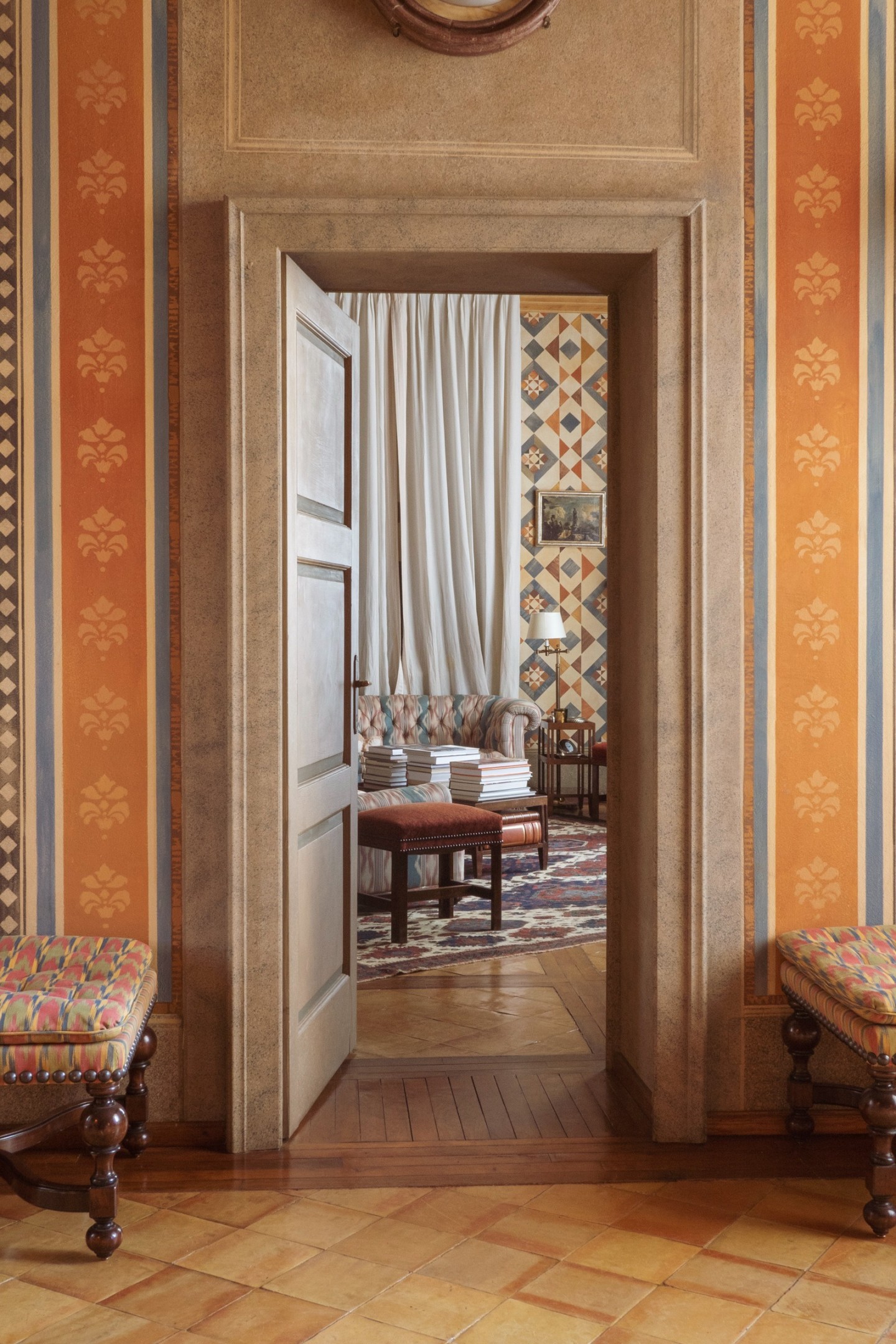
Roula Khalaf, Editor of the FT, selects her favourite stories in this weekly newsletter.
Cigognola. A fairly obscure little municipality in what’s known as the Oltrepò Pavese, a similarly obscure stretch of Lombardy near the border with Emilia-Romagna. To get there, you drive more or less due south from Milan for an hour, across terrain that is soporific in its monotony: flat, flat, flat... until suddenly it isn’t, and the hulk of the Ligurian Apennines materialises thrillingly out of the horizon. There, in the misty foothills, is this tiny place, marked by the solid foursquare brick tower of a castle, its parapet embrasures just discernible from the road below.
Like many such castles in Italy, Castello di Cigognola has foundations dating back to the 13th century. The fortifications tell the tale of its original purpose as a watchtower, strategically located in what was in its day a wild frontier, to monitor the commercial comings and goings along the ancient Via Emilia. The current castle, however, is far newer and more comfortable: a neo-gothic passion project, commissioned by Cigognola’s aristocratic owner, Don Carlo Arnaboldi Gazzaniga, in the mid-19th century. Arnaboldi would invite luminaries of the day, from poets (Eugenio Montale) to politicians (the revered Neapolitan senator and statesman Benedetto Croce), to exchange ideas and enjoy his wines, and his cultivation, at the edge of the wilderness.
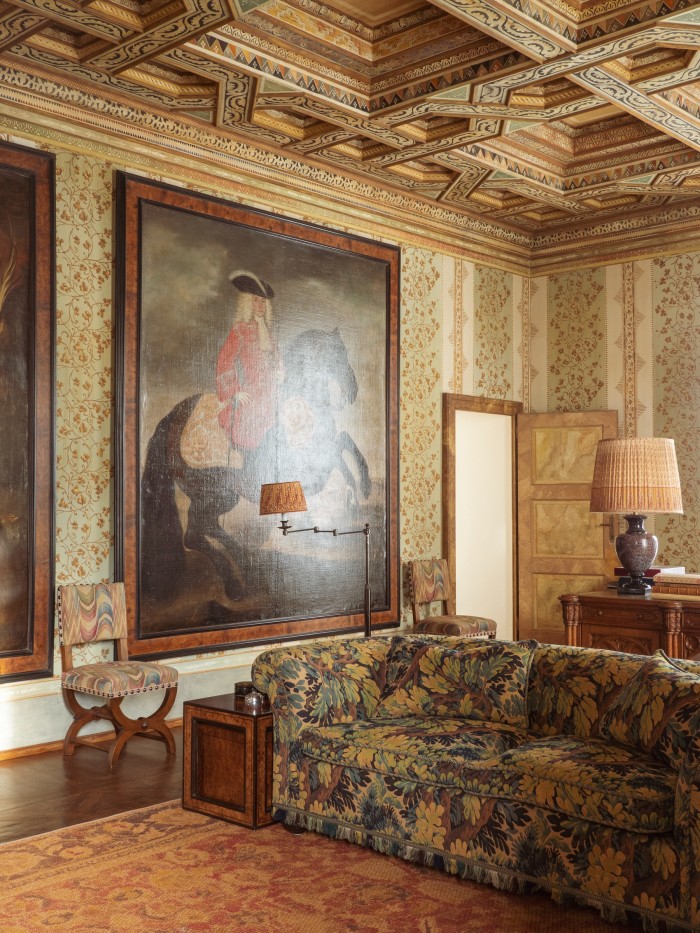
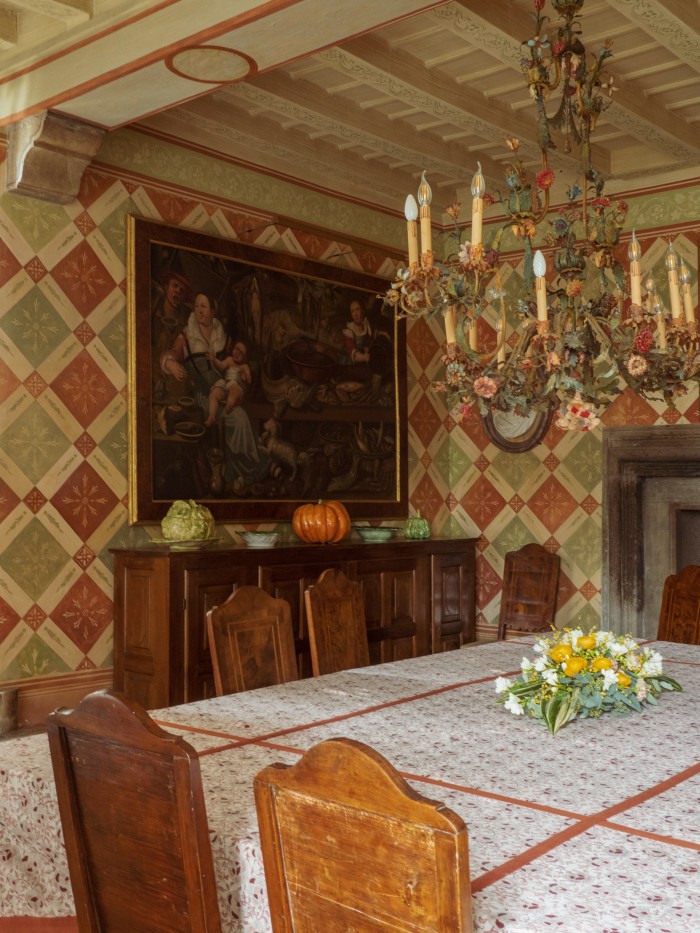
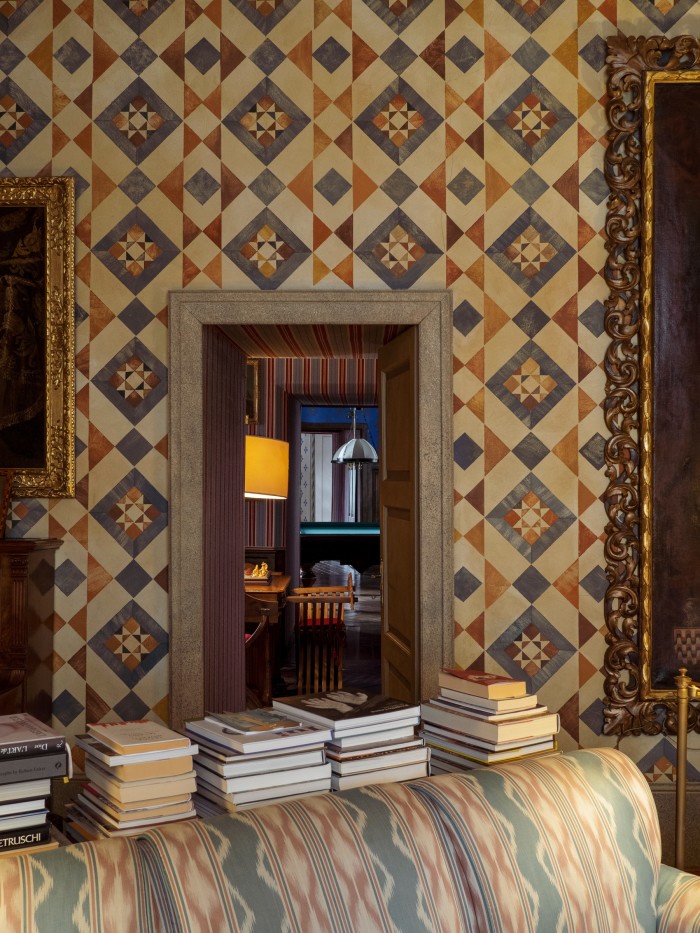
Almost 200 years after Count Carlo filled his salon with his era’s big thinkers, the next generation is exploring ways to bring 21st-century iterations of that tradition back to the castle and its grounds. The current owner Gabriele Moratti inherited Cigognola from his late father Gian Marco Moratti, who died in 2018. The elder Moratti bought the castle in 1981 from the father of his second wife, Gabriele’s mother Letizia Moratti – a former mayor of Milan and president of the broadcasting company RAI.
Over the past four years, Gabriele Moratti and his partner, the French ballet dancer Emilie Fouilloux, have quietly gone about reviving the castle’s history of cultural exchange: around live performance, food and wine, and academia. Together they have begun to create their own summer tradition, incorporating everything from ballet to philosophy talks that enlist historic locations in neighbouring towns. It’s what Moratti calls a “holistic expression of the spirit of this place”, and a way, he says, “to share it with others who will tell its story, keeping that story going, and writing the next part”.
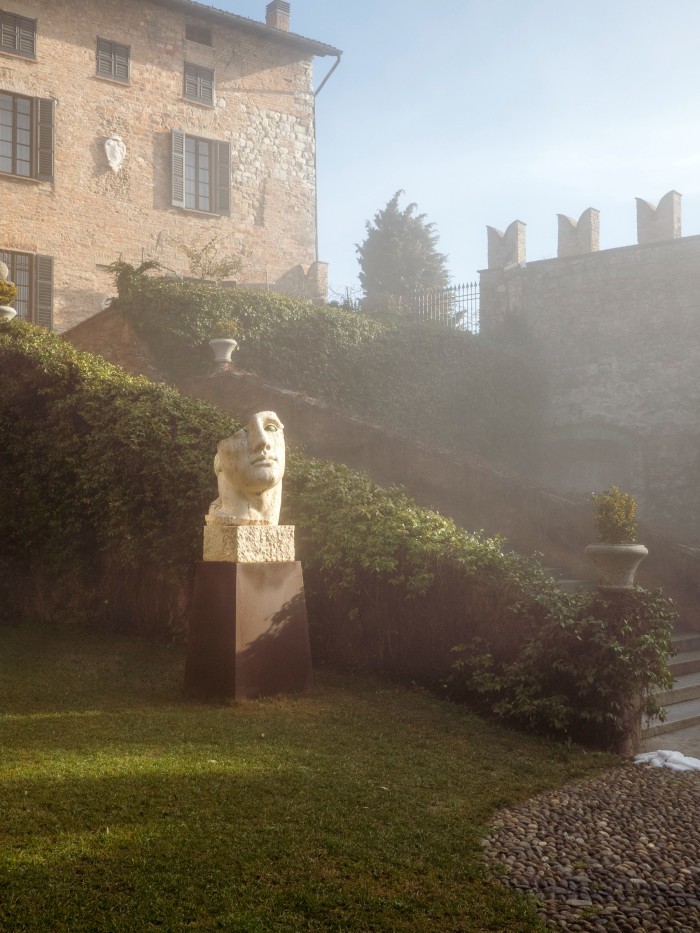

Moratti, 44, is a professional polymath: a film producer (his most recent project was the Luca Guadagnino-directed movie Bones and All), a fashion VC (he seeded the Milan-based philanthropic clothing brand Redemption) and, thanks to his family’s involvement with energy multinational Saras, on whose board he sits, a sometime oil executive. He added winemaker to the list when he inherited the estate. (As an abstainer, the irony of the vocation isn’t lost on him: “I was a bit surprised that my father [a collector of fine wines, who had enthusiastically rebooted Cigognola’s production in the ’90s with the help of famed oenologist Riccardo Cotarella] left the castle to the only one of his four children who doesn’t drink. But then, it was in keeping with his sense of humour,” he says with a smile.)
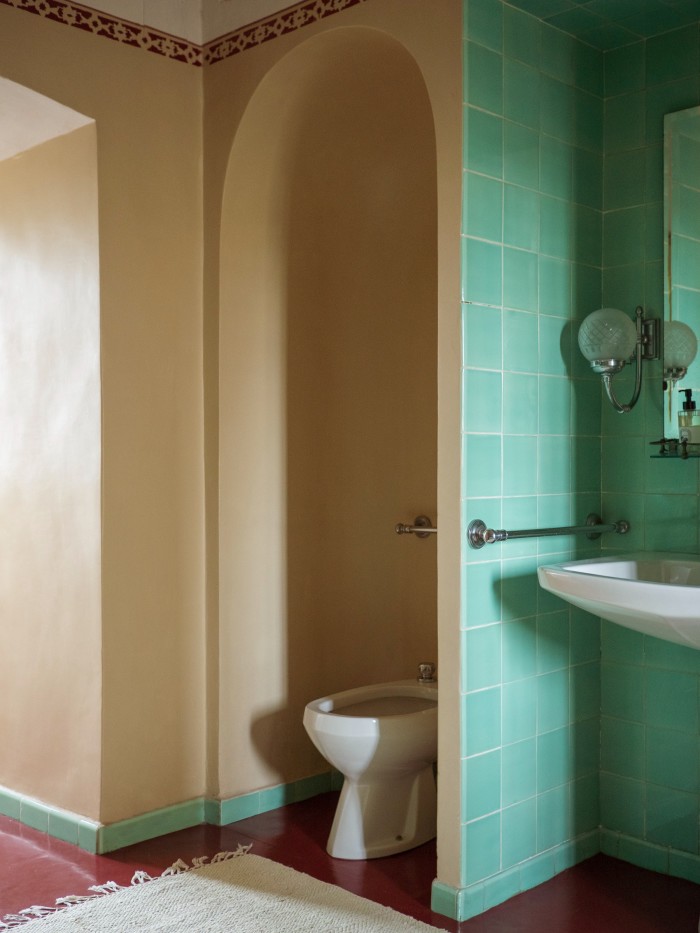
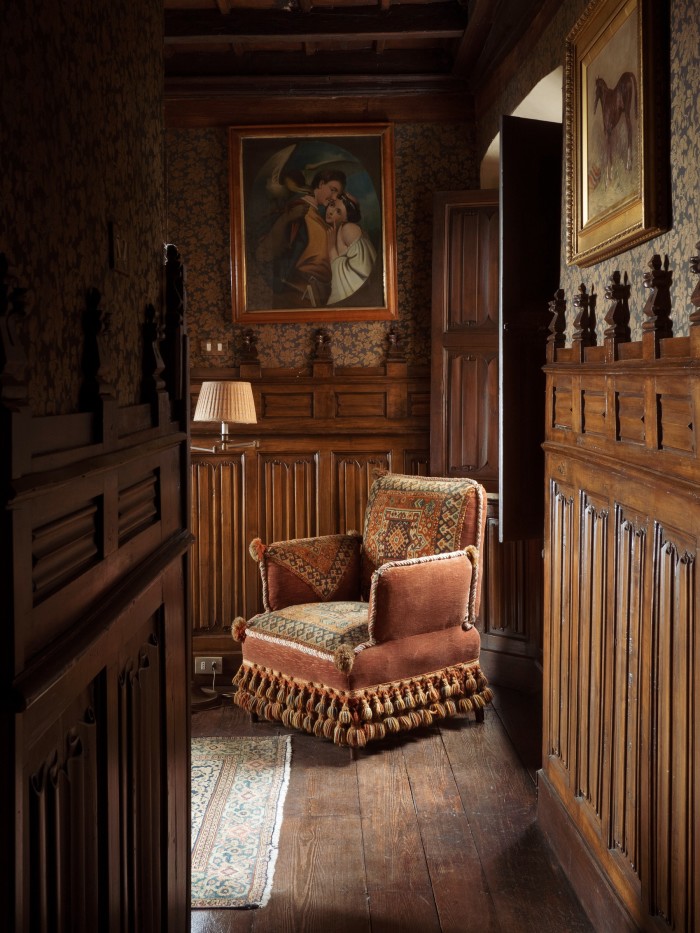
Despite the jet-setting occupations and coordinates of his adult life, Moratti’s childhood was simple, much of it spent in the rural reaches of Reggio Emilia in central Italy. His parents were prominent patrons of the communità di San Patrignano, the rehabilitation centre not far from Rimini where recovering addicts live on site for years, learning artisanal crafts and working in its highly respected Design Lab. Moratti spent much of the first 12 years of his life there, steeping in the value system and the privileged culture of handmade things. To this day, when not at Cigognola or in Milan, he is mostly based at San Patrignano. He recalls the castle feeling, by comparison, “like sleeping in a very beautiful museum” in his youth and, he adds, “it was definitely the place that shaped my idea of beauty”.
What connects San Patrignano to Cigognola is a legendary name in the world of interiors: the late Renzo Mongiardino, the prolific architect and stage-set artist who is often called the greatest designer of the 20th century. In the late ’70s, at the invitation of Gian Marco and Letizia Moratti, he too had become a patron of San Patrignano; many of the extraordinary wallpaper and textile designs he created over the years, produced by its Design Lab, now belong to the community’s archives. When a fire caused major damage to several parts of Cigognola in 1982, the Morattis asked Mongiardino to help them restore it, and a full renovation ensued.

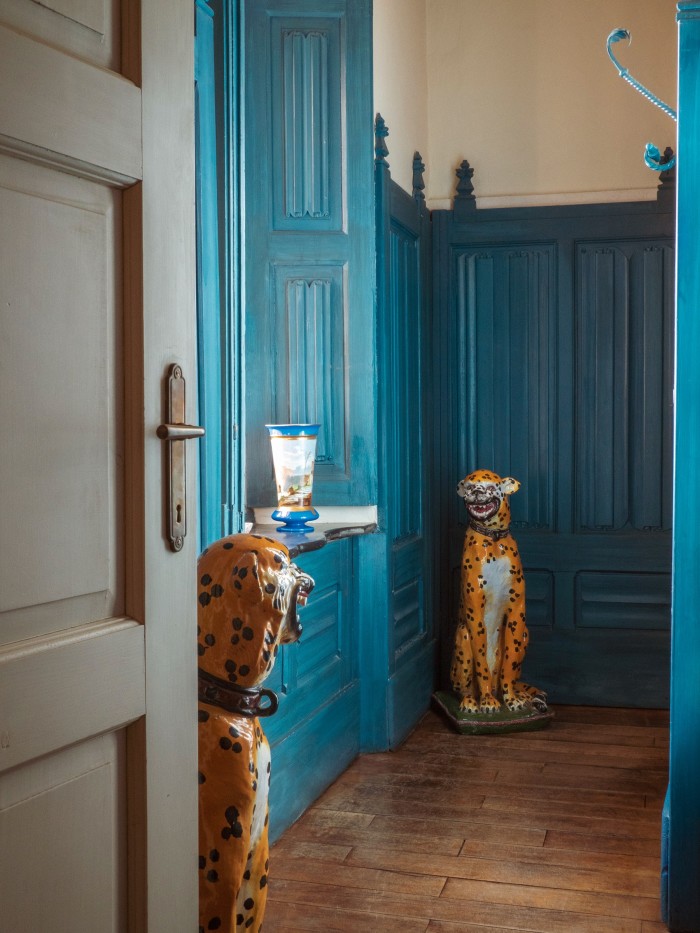
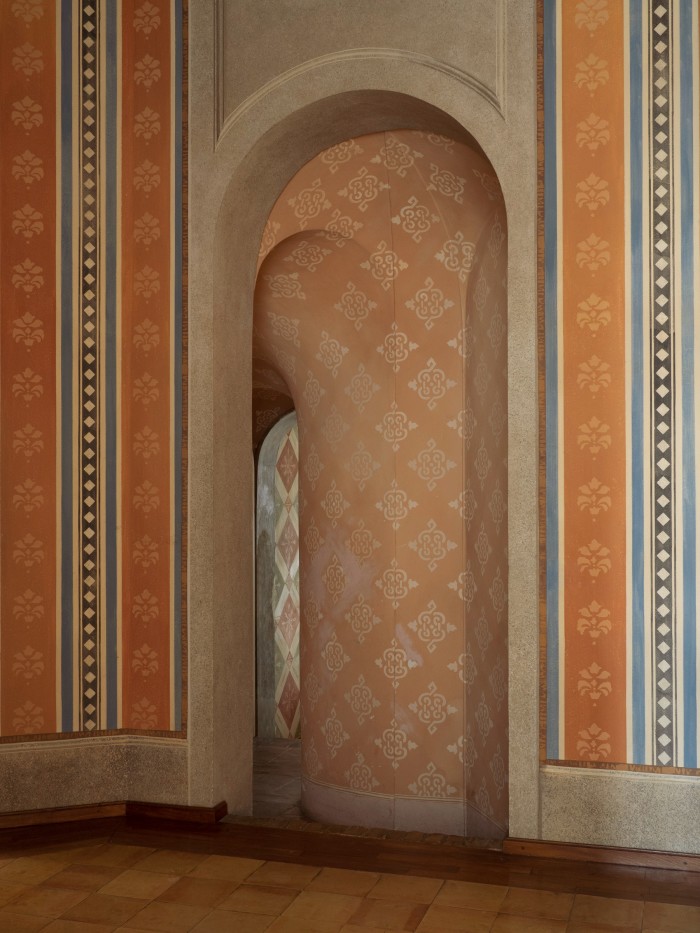
A walk through the castle is a heady immersion in Mongiardino’s genius – the stage- and film-set mastermind’s desire to craft atmosphere and delightful optical illusions radiates from the details. Hand-stencilled motifs march along monochromatic walls down stairs and service halls. Wide doors are inlaid and framed with monumental slabs of “marble” that aren’t marble at all, but rather hand-worked wallpaper. Boiserie is painted to look like the most naturally sun-faded fabric, by the same set designers with whom Mongiardino worked on major operas. The extraordinary ceiling of the main living room combines no fewer than 12 discrete design motifs, in a deliriously pretty scheme that interlocks around squares of completely unadorned oak panelling. Paisley, jacquard, suzani, chintz and chinoiserie all feature, mixed ebulliently. Even the humblest sisal rug takes on a flamboyant character of its own with meticulous deep-red and green stencilling.
I spend a day at the castle with Fouilloux, exploring every last hidden stair, corner and terrace. She shows me a guest room hung with more than two dozen painted-glass renderings of the Madonna and Child – some homely, some museum-quality – that were a favourite collectable of Gabriele’s great-grandmother. We admire the vast top-floor library of Gian Marco Moratti, clad in burnished walnut, with its brick terrace just below the tower’s parapet – the view, softened by a pearlescent mist, stretches north across the plain of the river Po to Milan and south into the mountains.
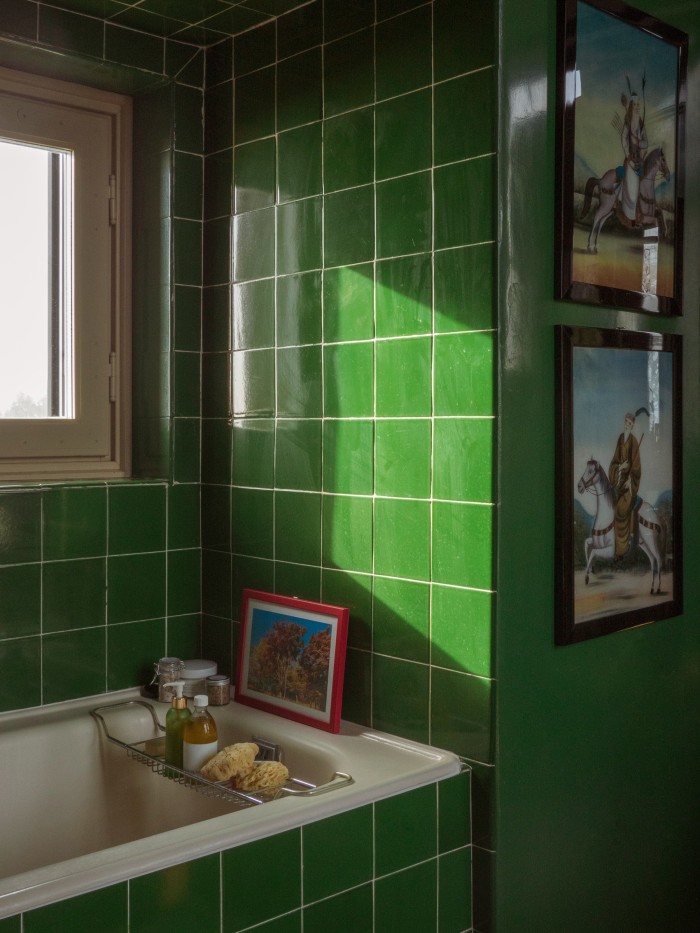

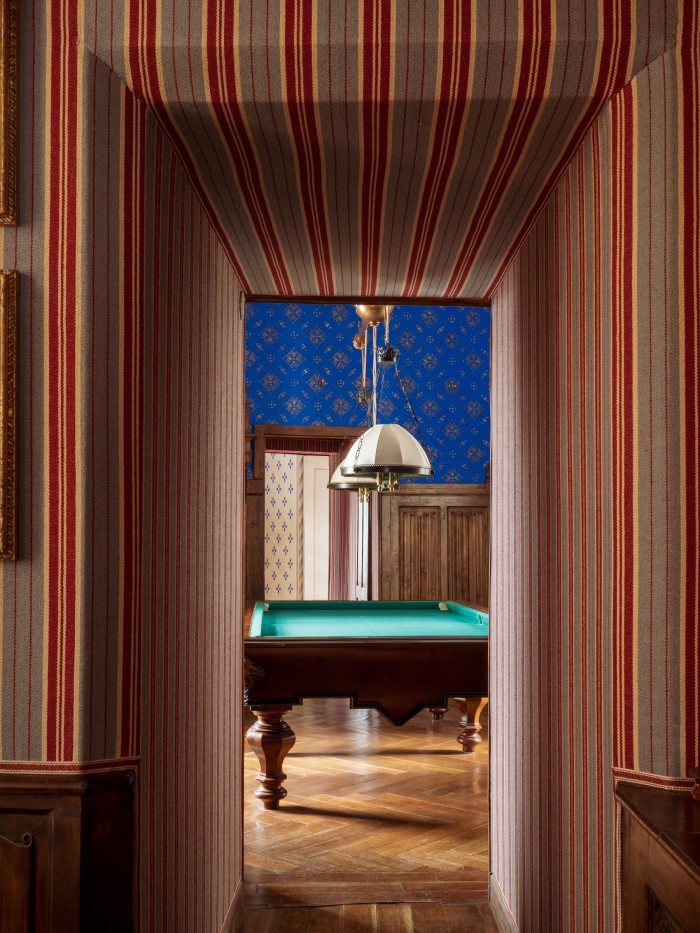
In a downstairs room (once a waiting room for dignitaries to be received and today hosting a billiards table), painted family crests dating back several centuries have been incorporated into newer wood panelling. On the upper walls, the rich pattern of stars on a deep-blue background recalls the ceilings of early-Renaissance cathedrals. The adjoining sitting room – now Moratti’s and Fouilloux’s shared office – is furnished with desks covered in label designs, vintage books and magazines for inspiration, an enormous ebonised grand piano and a full Roland drum kit (Moratti plays the drums, as well as the guitar).
Sipping sencha by the fire in a cosy ground-floor sitting room, Fouilloux and I chat about the couple’s aspiration to create awareness around their corner of Lombardy. “Gabriele has a theory about why the Oltrepò isn’t such a known region,” she says. “From Milan it’s pianura [plains] that go on for so long that people just… give up! They think they’ve seen all it has to offer.” Just a bit farther, she says, and they’d find the mountains, the lovely medieval city of Pavia – and more vineyards, she continues, noting that several of their neighbours produce interesting wines that merit more attention, as we lunch on home-cooked artichoke lasagna and salads, and drink Moratti’s own excellent Pas Dosé blanc de noirs. Among those Fouilloux has converted to Cigognola’s charms are the interior designer Pierre Yovanovitch and the artist Claire Tabouret, both friends of hers from her Paris days (“Pierre was like a child, so enthusiastic, asking all these questions. Now he’s interested in doing work with San Patrignano”).
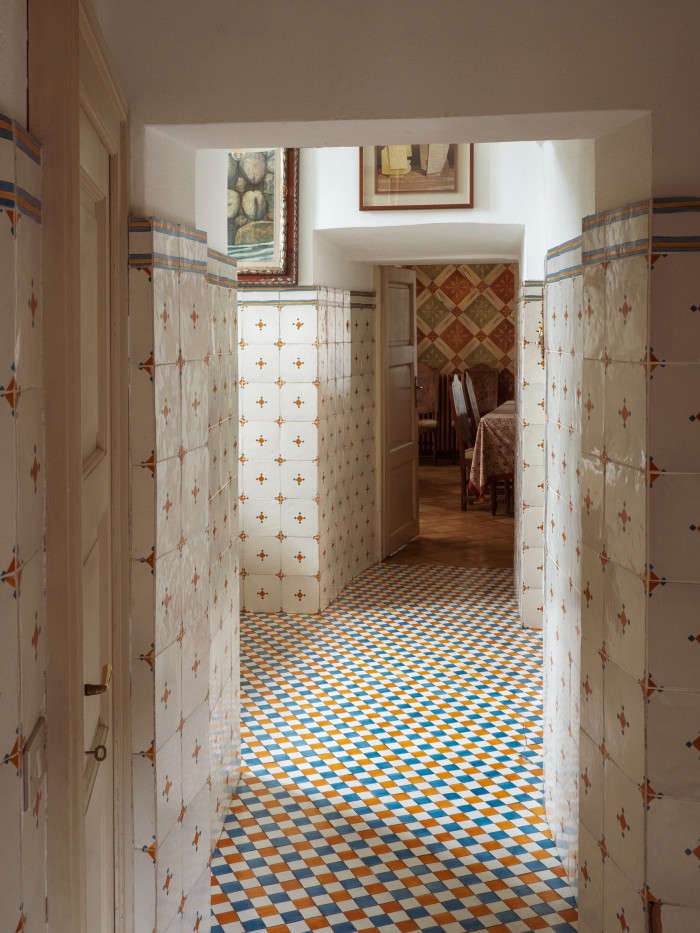
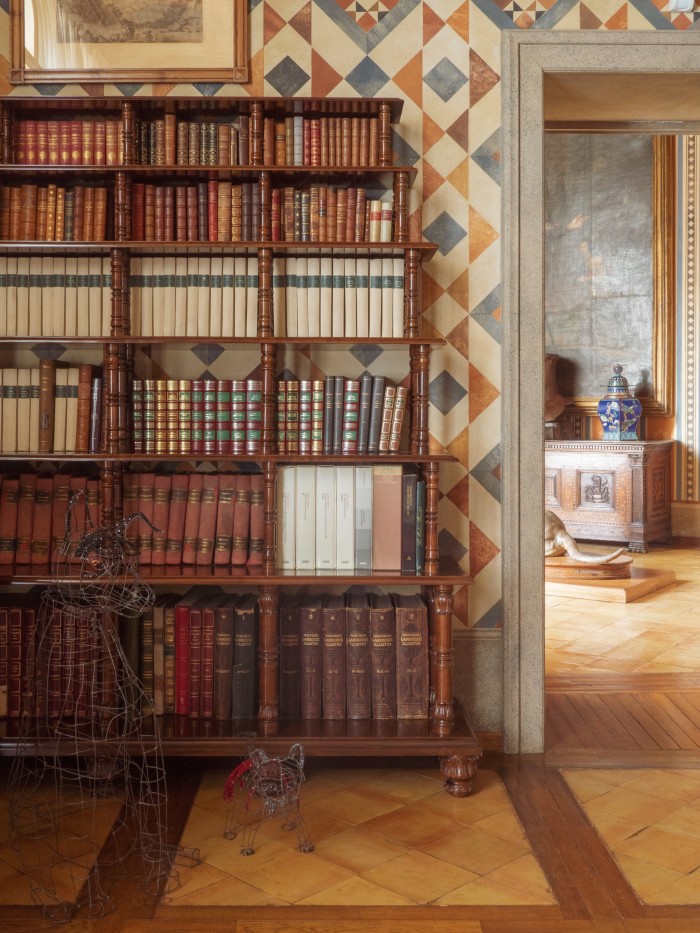
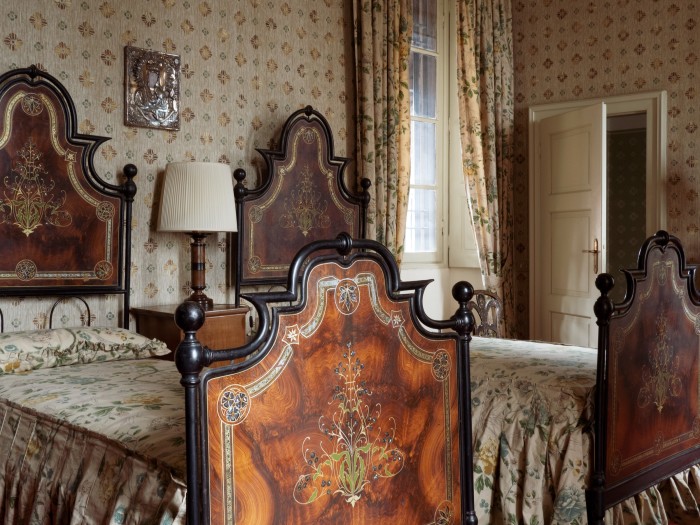
Previous summer-festival events, Fouilloux notes, were just a starting point. “We had the Paris Opera Ballet night, a jazz night at another and the Cameristi della Scala chamber orchestra from Milan,” she recalls. “It was big, a few days long, and ambitious, but perhaps not as dynamic or immersive as we could have done.”
For 2023, the couple have streamlined and expanded the plans: streamlined, in that the performance (which is by invitation only) will last just one evening on 17 June, and expanded in that it will combine all the previous elements – dance, music, tastings and, of course, the castle itself in a multi-hour, multi-venue roving showcase. Dancers from the Paris Opera will perform at intervals across various gardens and lawns, in between wine tastings and dinner. Among other musical interludes, a solo cellist fills the feature. “In a ballet company, you rarely get to interact with the musicians,” Fouilloux says. “So it’s quite beautiful to collaborate closely this way. It’s a more organic connection.”
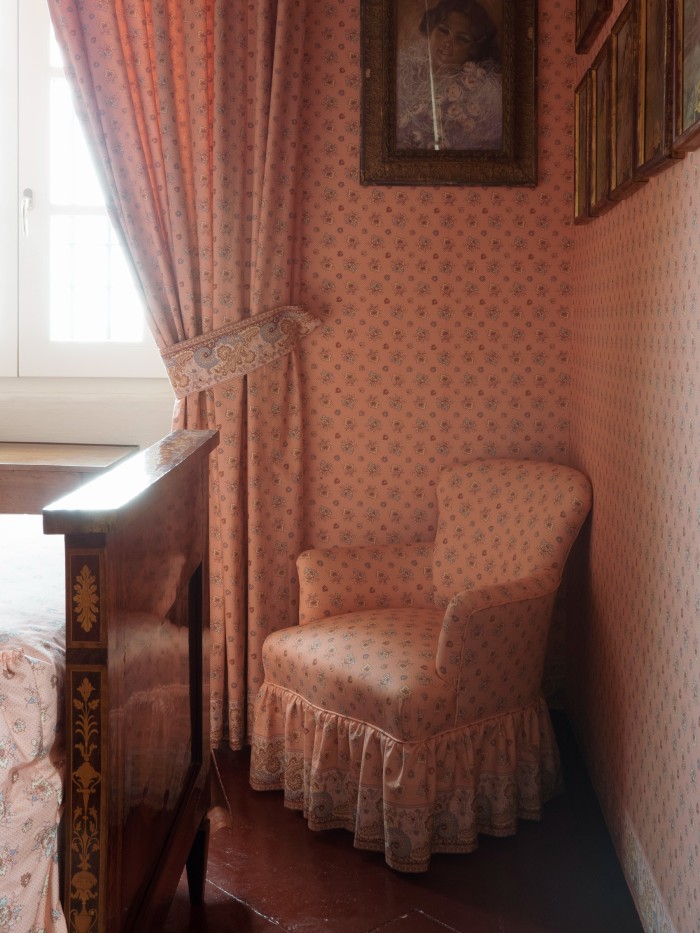
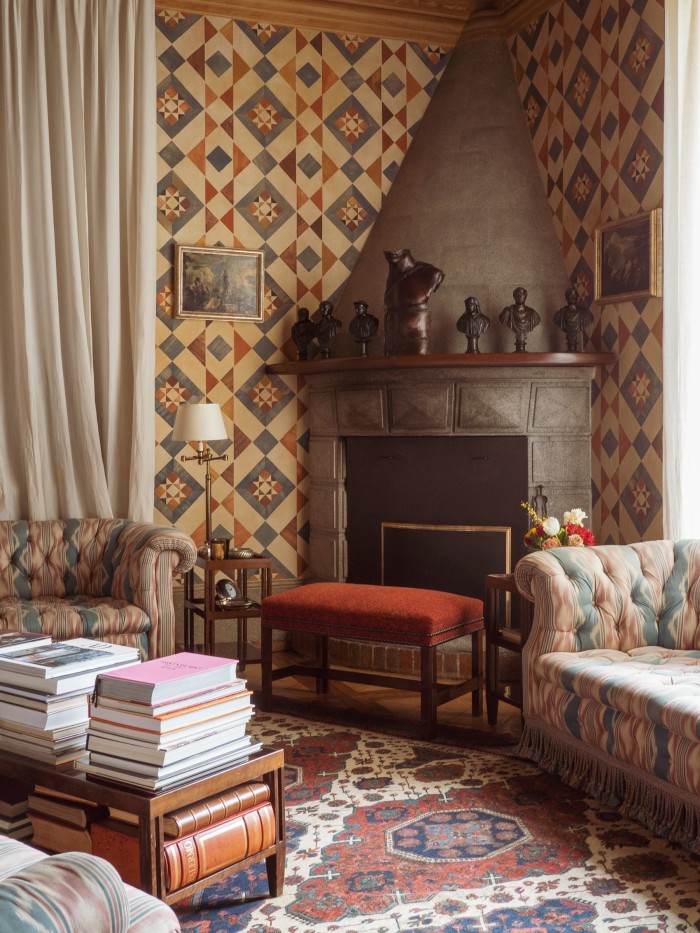
In the meantime, they are looking to May 2024, when Cigognola will host its first retreat with Yoga For Bad People (founders Katelin Sisson and Heather Lilleston’s mission statement is: “We are normal people. We want to have fun. And we like yoga”). That mission, reckons Fouilloux, chimes perfectly with what Cigognola has to offer: wholesome food, good wine and magical surrounds. It will be the first time in its history that Cigognola opens to paying guests – but it’s hard to imagine it will be the last.
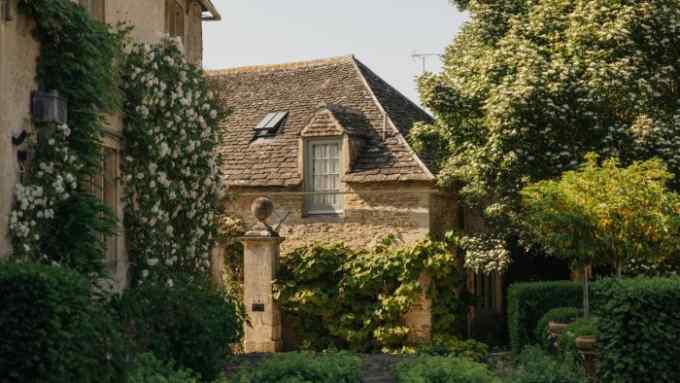
Comments